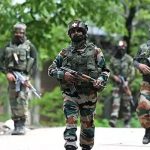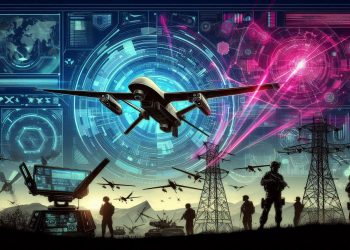Operation Sindoor marked a pivotal moment in India’s strategic posture. While the operation showcased the resolve and effectiveness of our Armed Forces, it also brought to the fore challenges related to the individual services, jointness and structure of higher military direction. The same has re-emphasised the imperative for institutional transformation to meet the demands of future conflicts.
Lessons from Operation Sindoor
The Operation saw the political and military leadership operate in close coordination, with clearly defined politico-military objectives that were both realistic and achieved within designated timeframes. While the operation was a political and military success, there are valuable lessons that need to be learnt at the strategic and national level.
Contemporarily, India’s most probable threat is on its Northern borders from China. Whereas, our western adversary’s (Pakistan) proxy warfare capabilities remain intact making it an immediate threat. While there has been strategic focus on our most probable threat, singular focus on China can be a grave miscalculation – especially given the increasingly fused China-Pakistan partnership. Therefore, Political leaders, higher defence organisations and military commanders must now adapt to this collusive threat as our most probable threat and immediate threat have manifested into one.
The operation established new operational norms for assertive, calibrated responses. However, future Pakistani reactions may be more aggressive or involve rapid escalation, making escalation control a planning imperative rather than an assumption.
Pakistan’s Misinformation, Disinformation, and Malinformation (MDM) Campaign during the conflict proved that Information warfare has become an integral part of modern warfare. While the MEA and armed forces worked in unison to counter Pakistan’s MDM campaign, the conflict showed that Perception warfare requires long-term planning, international engagement and strategic communication and not ad-hoc responses.
Recommendations
Drone warfare has emerged as a critical domain in contemporary wars. Therefore, India needs immediate enhancement in this sphere. There is an urgent need for tactical drones with forward units, adequate C-UAS systems, and preparedness against swarm drone attacks.
Operation Sindoor’s success strengthens the case of Theatre Commands. The operation’s limited scope allowed services to operate largely in isolation while achieving objectives-a luxury unlikely to be available in future multi-domain, protracted conflicts.
Looking ahead, India must prepare for prolonged, high-intensity conflicts that may span multiple theatres and domains. These could involve simultaneous conventional and unconventional threats, including grey zone tactics, as well as warfare in the cyber, space, and information realms. Traditional siloed responses and parallel command structures will be inadequate. Instead, such challenges will require integrated multi-domain operations (MDO), agile force deployment, and real-time resource prioritisation.
India cannot assume that future conflicts will offer the operational freedom seen during Operation Sindoor. The evolving security landscape demands preparedness not just for anticipated threats but also for unpredictable and rapidly escalating scenarios. In this context, the transition to Theatre Commands is no longer a discretionary reform, it is a strategic imperative rooted in operational realism. Integrated and agile structures are essential to enhance jointness, improve responsiveness, and ensure effective force application across domains. Posturing for the future requires a shift from fragmented command systems to unified commands capable of addressing the complex demands of modern warfare.
Modern warfare demands seamless integration across multiple domains—cyber, space, electronic warfare, and kinetic operations. To maintain a decisive edge, sensor-to-shooter loops must be closed within seconds rather than hours. This rapid tempo requires dynamic, priority-based resource allocation and real-time coordination. At the strategic level, unified military advice is essential to inform political leadership and enable timely, effective decision-making.
Theatre Commands address these imperatives through unity of command, enabling faster decision-making and integrated campaign design. They facilitate real-time asset sharing across intelligence, surveillance, reconnaissance, fires, and logistics without bureaucratic barriers, ensuring decisive tempo in multi-domain operations.
Roadmap for Transformation
The transition to Theatre Commands requires immediate implementation rather than prolonged deliberation. A phased approach should begin with doctrinal and structural alignment through a comprehensive National Joint War Doctrine, followed by systems and infrastructure integration featuring unified command-and-control architecture.
A learn-as-you-operate model should replace the perfectionist delays. Theatre Commands must become operational immediately, with continuous refinement through joint training, multi-domain simulations, and live-fire exercises. This approach ensures that institutional transformation occurs alongside operational readiness rather than despite it.
Resource optimisation becomes critical as India faces complex threat environment with finite resources. Theatre Commands will enable centralised, priority-based allocation of scarce high-value assets while retaining service core competencies within an integrated framework.
Strategic Imperative
Operation Sindoor demonstrated that India possesses the operational capability and strategic resolve to respond decisively to threats. However, it also revealed that future conflicts will demand institutional transformation beyond current structures.
The operation’s lessons extend beyond tactical improvements to fundamental questions of military organisation. India cannot assume future conflicts will afford the same operational latitude. The imperative is preparing for uncertain, escalatory scenarios where traditional boundaries become irrelevant.
Conclusion
Strategic synergy, operational efficiency, and institutional coherence will determine success in future multi-domain operations. Theatre commands represent not merely organisational restructuring but the foundation for India’s military effectiveness in an
era of rapid technological change and evolving threat patterns.
Operation Sindoor’s legacy lies not just in its immediate tactical success but in its clarification of India’s strategic imperatives. The Armed Forces have demonstrated their capability; now the institutional framework must evolve to match their potential. The transition to Theatre Commands represents not a choice but a strategic necessity, one that cannot await perfect conditions but must be pursued with the same resolve and vigour that characterised Operation Sindoor itself.
The window for transformation is now. India’s strategic competitors are innovating in real-time, and institutional adaptation must match the pace of operational excellence already demonstrated by the Armed Forces.













